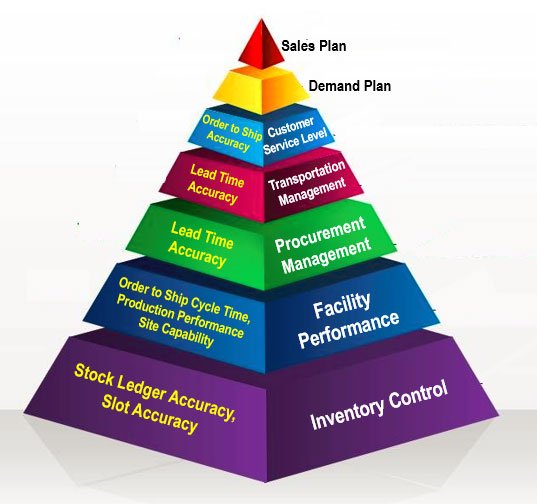Published January 24, 2018
Every business defines the key performance indicators (KPI) they monitor and manage with the goal of delivering on expectations and driving for “optimal” performance. While, each area works to find detailed parameters they can directly control, it seems everyone is losing site of the big picture. The most impactful KPI is inventory.
The level of inventory shows the collective effort of the entire business as efficiently and accurately managing their aspect of the business. Teams with poor cross functional teamwork and/or misinformation is manifested in increased inventory levels. A failure to recognize the interconnected nature of the chain results in each process being managed effectively but the entire process being managed poorly.
What are your inventory levels within the business? How well are you meeting your customer orders in the time defined? Can your business afford the inventories you are currently requiring?
- Are You on the right path?
In most organizations, the executive suite defines a sales and profit target for the business. All teams then line up to define how they will meet the requisite performance. Unless this topside plan is metered by a bottom’s-up demand plan, the team is on the wrong path. Group Think, too many teams fall into the collective group think paradox.
- Are you driving sales opportunities?
With a sales plan above the demand plan, the level of inventory will be well above what is needed. Unless considered action is completed to alter the “normal” demand pattern, the business will end the selling period with more inventory than was needed.
What many fail to understand is that “taking risk” should occur in a controlled way where inventory is planned, opportunities created, and teams managed. Without a strong supply chain voice in this discussion, there will be an imbalance of power and critical capital will be invested in unproductive assets.
Here are a few of the biggest inventory drivers:
- Demand Planning: The process of reviewing historical demand and predicting the future.
- Sales Planning: The process of defining how much revenue and profit the business will deliver.
- Vendor Management: The process of managing the on-time performance (quantity and delivery date) of a supplier as stated in their contracted lead time.
- Customer Service Level: The agreement we have made with our customers on the time it will take to receive the product in hand once the order is placed.
- Facility Performance: The facility throughput capability (i.e. order receipt to ship) directly impacts the service level the business can commit to and the time left in the transportation process to meet market needs.
- Transportation Management: The process of delivering products consistently at the same time throughout the network.
- Production Performance: The consistency of the internal manufacturing process to deliver products when promised.
- Inventory Control: The accuracy of the inventory levels posted in the stock ledger.
- Sales Restriction: Inventory people are always fearful of, and get over ruled by, the requirement to not “restrict” the upside demand of a business.
Almost every area of the business has a direct impact on inventory.
- What is the team’s focus?
There is no other single measurement that is more effective to provide a scorecard of execution other than, sales and revenue.
While, the level of inventory has proven to directly correlate with the performance of a business, it has also been found to drive loss when not optimally managed. Defining the right balance of sales and inventory is critical in managing the cash flow of the business and effectively driving growth.
How do you balance the needs to increase sales, while minimizing cost and freeing working capital? This happens through a collective dialogue with the entire leadership team.
More Resources
- Video: Get to Know MonarchFx
- Article: Inventory KPI, The Right Metric



